

There are many ways to get to know Africa, but there is hardly a safer and more magnificent route than starting through Namibia to reach the heart of the black continent.
Namibia's greatest treasure is its landscape. This region is characterized by unimaginable beauty and diversity, with breathtaking vistas that no photograph or film can truly capture. It’s no coincidence that this country—over three times the size of the United Kingdom but with only a fraction of its population—is one of Africa’s most popular tourist destinations.
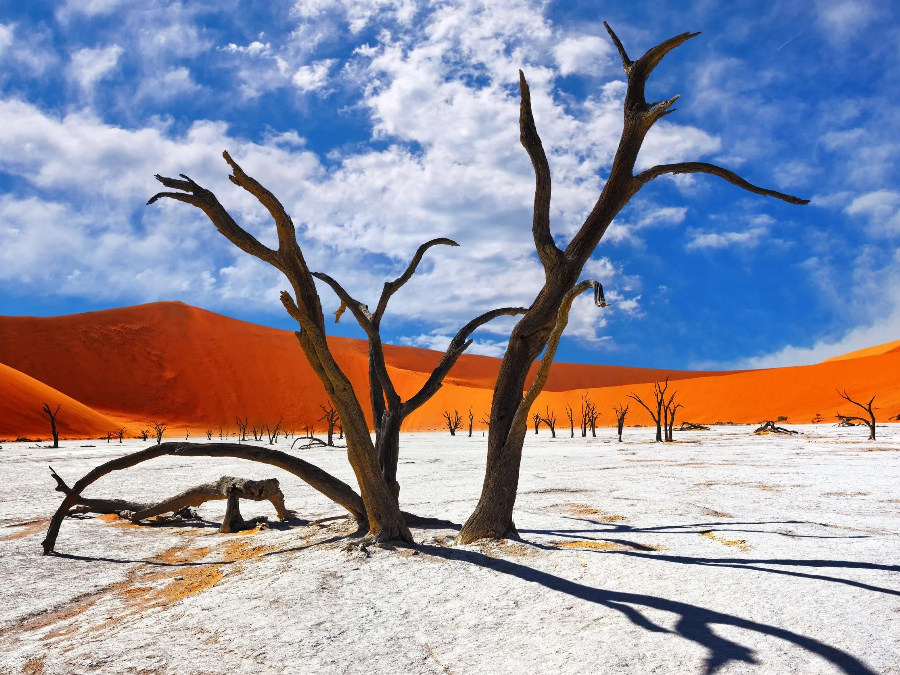
This primarily desert region is visited mainly for its natural wonders and wildlife, but travelers can expect a much more diverse range of experiences than just a tour of the Namib Desert. A safari among wild animals or a tropical getaway? Mountain adventures or climbing sand dunes? White-water rafting or exploring ghost ships? Or perhaps stargazing under the world’s clearest skies? There are thousands of activities to choose from. Let’s set off and discover the treasures of Namibia!
Arrive, embrace, experience
Most travelers arrive in Windhoek, the centrally located capital. Whether continuing the journey by domestic flight or setting off in a rental car toward more distant regions, the city's central location makes it the perfect starting point for an African adventure. The vast country’s northern, western, and southern corners all offer plenty to explore—though even several weeks wouldn't be enough to see it all.

Even if we settle for exploring just one region, we should be prepared for vast distances—a road trip of several thousand kilometers is not unusual. The main routes that crisscross the country often include stretches of perfectly straight road that run for tens of kilometers and are of surprisingly good quality by European standards. However, never exceed the speed limit. Livestock or wild animals can step onto the road at any moment, both in and outside villages. Once we leave the paved roads, the real adventure begins—and it quickly becomes clear why a 4x4 is essential here. We find ourselves crossing endless expanses of sand, gravel, rock, or even swampy, marshy terrain (especially in the rainy season), where at times the only indication of the road ahead is the faint trail left by previous vehicles. Slow down from the pace of home, embrace the slower rhythm of life here, and allow time to stop, observe, and take it all in along the way. This is how Africa’s captivating world reaches us—and how the journey becomes a truly life-changing experience.
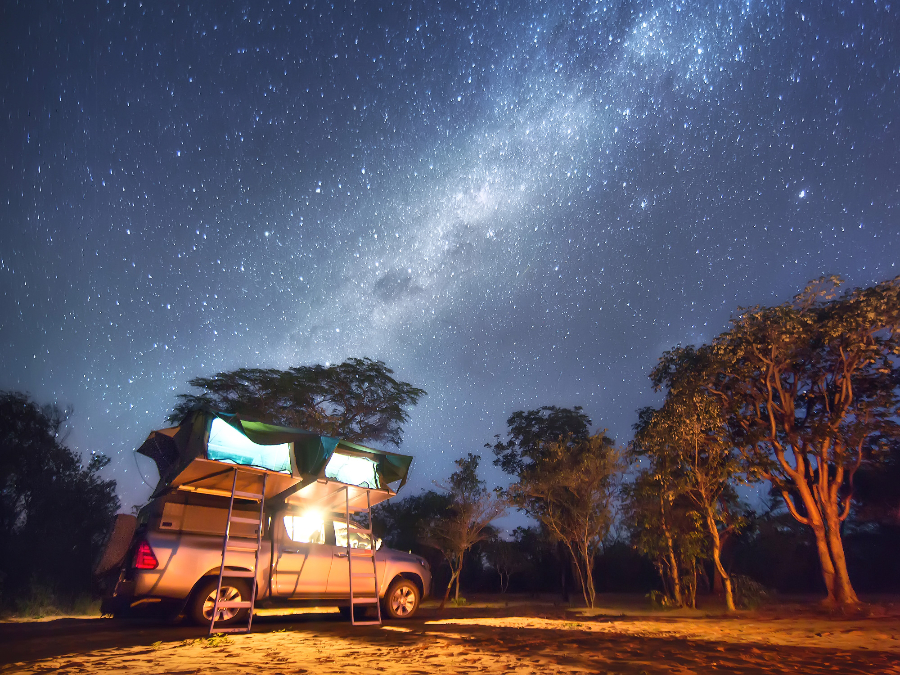
Night driving is far from safe. Always prepare a carefully planned itinerary that ensures you reach your accommodation by sunset. After dark, the wilderness comes alive, and animals that remain hidden during the day often take over the stretches of asphalt, where they are less likely to be ambushed by lions or other predators lurking in the dense bush. Near villages, herds of goats and cattle crossing the road demand extra attention, as they can appear suddenly out of the pitch-black night.
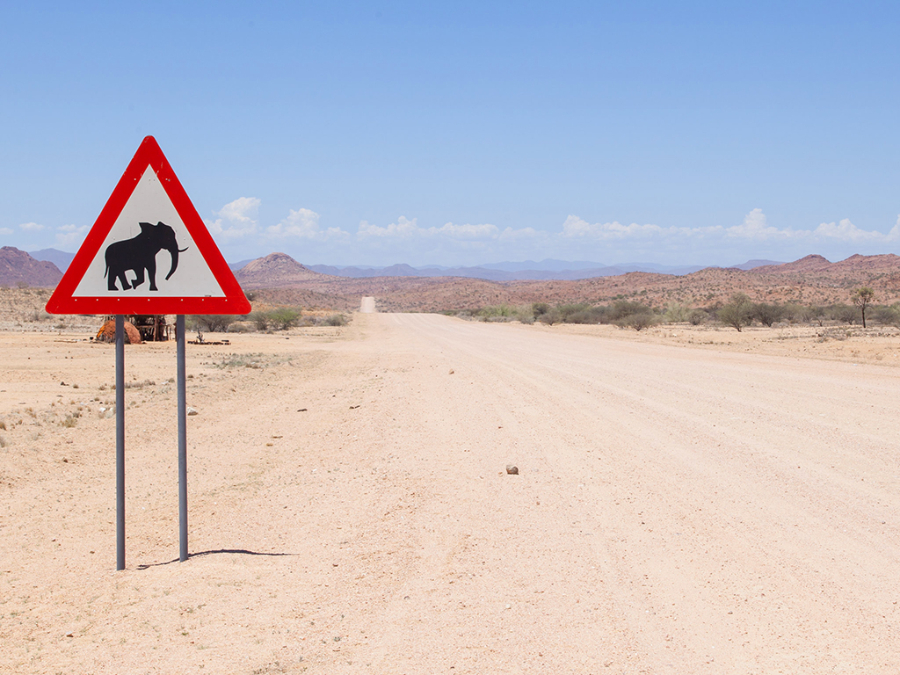
The distances between cities are on an entirely different scale compared to what we’re used to at home. You might drive two or three hundred kilometers without passing through any inhabited settlements or finding a gas station to stop for a break. Never take chances—fill up your car’s fuel tank whenever possible. Additionally, use two GPS devices for navigation. In the absence of road signs, these are essential not just for safe orientation but also for selecting the best route. By comparing the directions suggested by both devices, we can choose the most suitable path—not necessarily the shortest, but at least one that’s paved. The GPS provided with a rental car has a far more detailed road network map than Google’s mobile app. The former includes paths crossing sand dunes and savannahs, while the latter can be more helpful for planning longer routes.
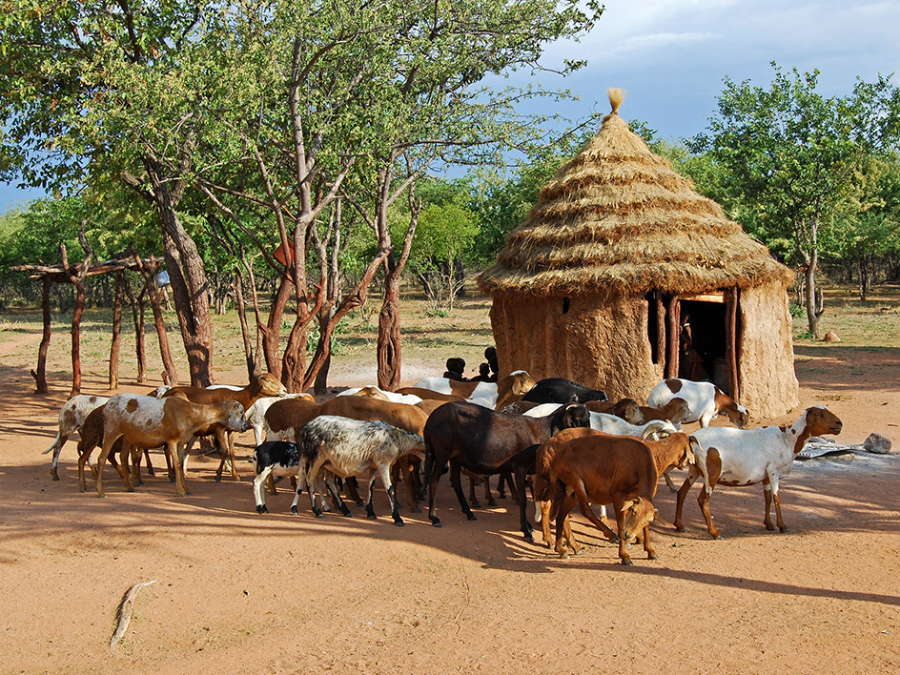
During our long journey, we notice that it is exclusively women who are working the fields, hoeing, and harvesting crops. They are the ones who fetch water—sometimes walking several kilometers—carrying cans to the river or to the village's only well. Alongside the women of the family, the children also take part in the essential daily routine of life from an early age: the youngest are tied to the women’s backs, while those who can walk carry their own cans on the journey, whether long or short. The children’s task is to herd, guard, and graze the family’s livestock. Wherever our path takes us, grazing livestock by the roadside is an inseparable part of the rural landscape.
Etosha National Park
Namibia's 26 national parks and game reserves would provide enough experiences for a lifetime if we had the chance to visit them all. Among them, the most popular and famous, as well as the oldest, is Etosha National Park. The park's name literally means "great white plain," and it refers to a 150-kilometer-long salt pan and its surrounding area in northern Namibia. The areas surrounding the salt pan are endless plains, savannahs dotted with forests and bushes, and they are home to an incredibly rich array of wildlife.
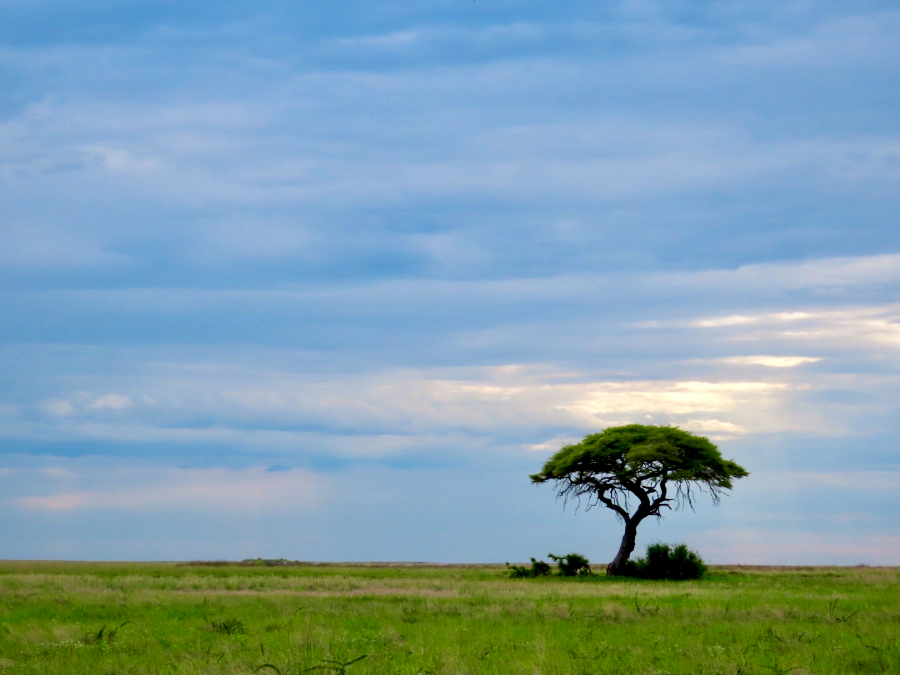
The 22,000 square kilometer park is two-thirds accessible, and visitors can explore it independently by car or camper van, as long as a few basic rules are followed. The waterholes and popular animal gathering spots are easy to reach, but it is strictly prohibited to exit the vehicle here and in other areas of the park. On the main roads, the speed limit is 60 km/h, and by dusk, visitors must reach one of the fenced campsites. These campsites are equipped with shops, restaurants, and gas stations, available year-round. The best time for wildlife viewing is during the dry season, when the vegetation that provides shelter for animals completely dries up. If you spend a few days in the national park between April and October, the countless wonders of the wildlife will captivate you for life.
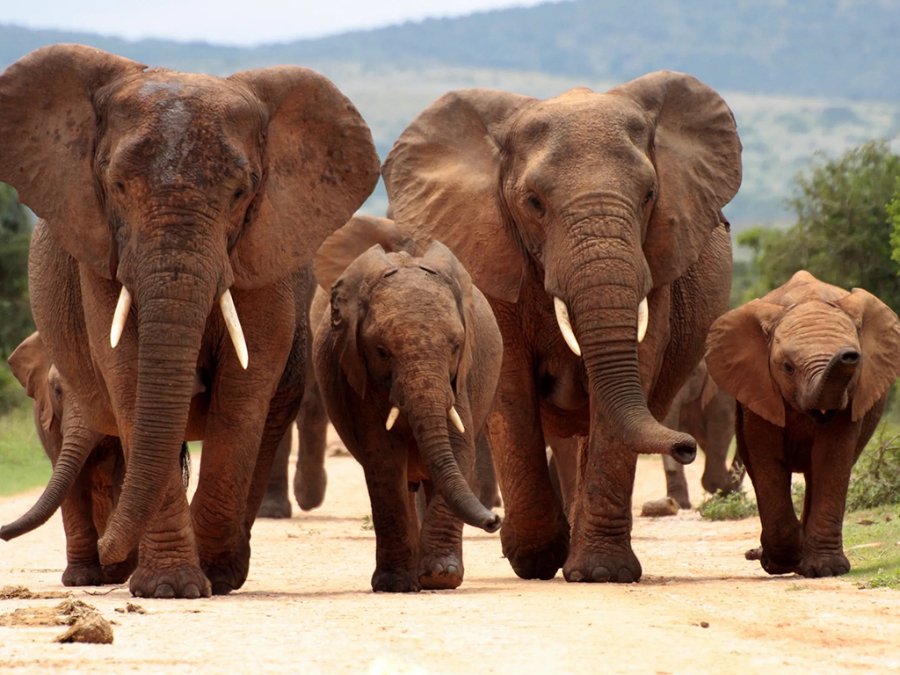
Early in the morning or at sunset, animals flock to the waterholes—rhinos, zebras, impalas, giraffes, migrating elephant herds, wildebeests, jackals, lions, and leopards appear before our eyes or through the lens of our cameras. The variety of animals that can be captured on film is truly astounding. In just a few days, we could fill an entire National Geographic catalog with photos of wildlife that often approach to within a few meters, almost within touching distance. We are free to take photos and videos, but drones are strictly prohibited within the park’s boundaries!
Of course, we don't have to navigate the vast park on our own; expert guides with local knowledge are available to assist. If we're planning to take part in a full-day safari, it’s best not to book accommodation too far away. We can opt for a first-class hotel or campsite, from where we can join a guided tour to explore the must-see spots. There’s plenty to see, with nearly 120 mammal species living here, each deserving of our attention.
During the rainy season, the landscape shows a completely different side. We can drive through lush, green savannas, covered in colorful blankets of flowers, with shrubs and trees dressed in thick, vibrant leaves. It’s more challenging to track wildlife at this time, but the water catchments and artificial watering holes remain reliable spots for observing animals, even during this season.

The abundance of wildlife in the national park might lead us to think that it’s an eternal natural wonder, always has been, and always will be. However, Etosha’s history is more turbulent than that, with many animal populations needing to be relocated to the area. It’s a true conservation success story, achieved through the collaboration of local residents and dedicated Europeans. For this reason, it’s important for travelers to also take care of nature and leave the smallest possible "footprint" behind in the park.
Tropical Namibia
Although much of Namibia is dominated by the Namib and Kalahari deserts, it is far richer and more vibrant than just a desert country. There is life beyond the sand, especially in the northeastern part of the country, where we can discover a vast aquatic paradise. The Okavango River, originating in Angola, serves as a kind of boundary river between the two countries.
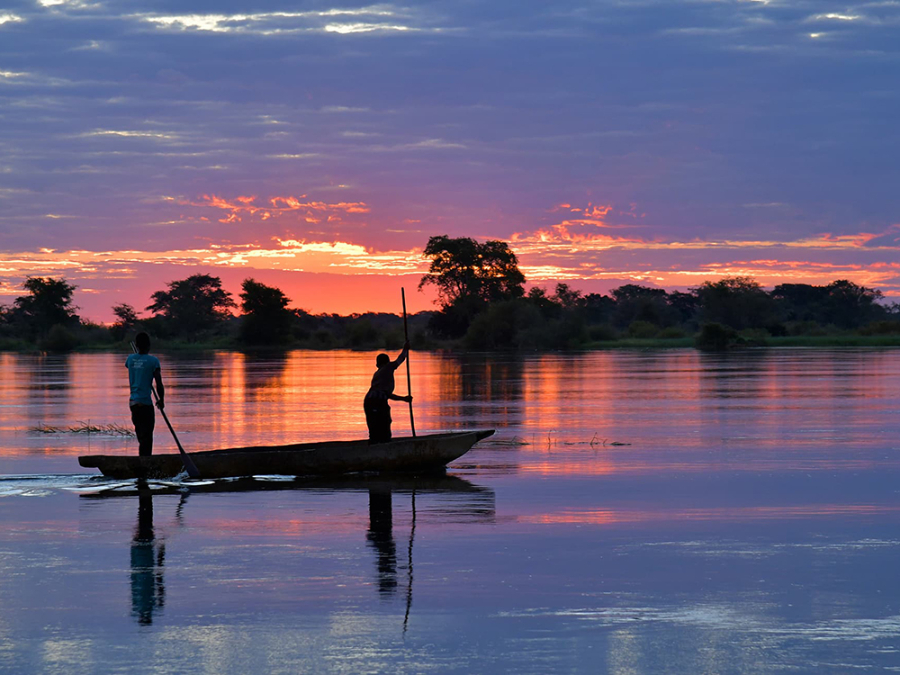
What makes it unique is that at the end of its 1,600-kilometer journey, it does not flow into the sea, but instead widens into the fan-like channels of the Okavango Delta before its waters are eventually absorbed by the desert sands. Until then, however, it forms a magnificent green ribbon on the map of Africa, bringing life to the barren land with its water. A wonderfully diverse range of plant and animal life thrives around the river and within it, and our task is simply to protect and marvel at all of this.
Waiting for dawn on the banks of the Okavango is an experience that stays with you forever. With a steaming cup of coffee in hand, you watch the sunlight filtering through the thick mist hovering above the slow-flowing water, listening to the sounds of nature, and observing the morning rituals of the river's wildlife. These are moments filled with peace that seem eternal, lingering with you long after the mist vanishes under the intensifying heat of the sun.
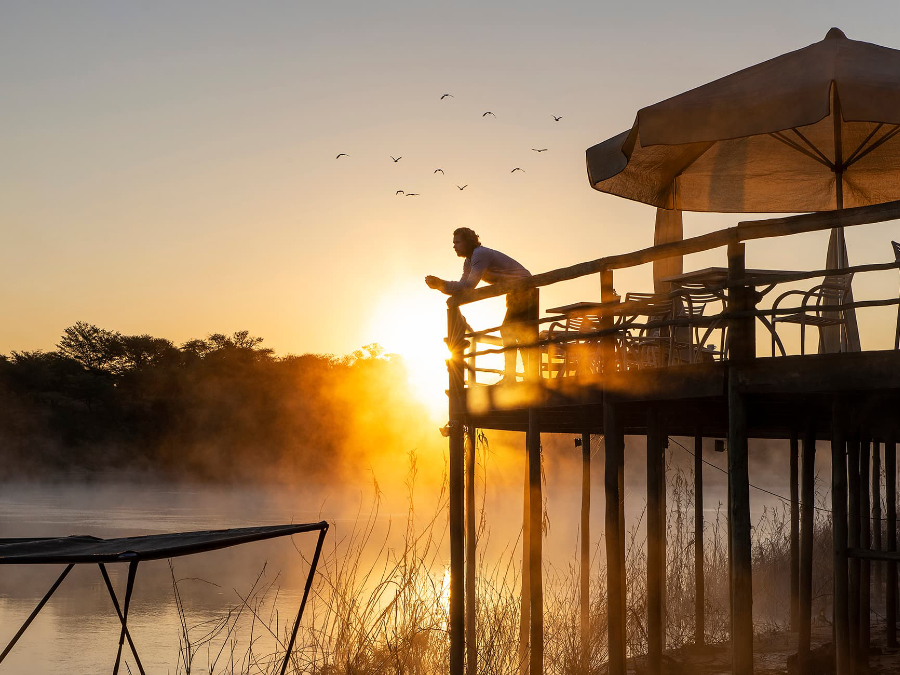
The significant Namibian settlement along the river is Rundu, located just 16 kilometers away from Hakusembe River Lodge, making it an excellent base for exploring tropical Namibia. There’s no need for an especially long expedition to admire crocodiles slipping into the water, spot a wallowing buffalo, or catch a glimpse of an African elephant.
As we continue along the Okavango River toward the northeastern tip of Namibia, we reach the country’s greenest region, the Zambezi region. We are now in the heart of Black Africa, close to the Angolan border. Along the way, there are frequent police checkpoints. In most places, as tourists, we simply need to slow down, and upon seeing the rental car, the stern uniformed officers wave us through with a friendly gesture. We may encounter similar officers at the entrances to national parks, where sometimes they open the luggage compartment to check that we're not carrying any live animals. Today, the wildlife in national parks is strictly protected, while in private reserves—similar to other African countries—paid hunting still takes place, allowing wealthy tourists to hunt exotic trophies at their request. While driving through Africa’s diverse natural beauty and admiring the untouched wildlife, it’s difficult to comprehend that there are those who find their entertainment in destroying it.
We are heading to the heart of the continent, to the world’s only "four-point" where four countries meet. If we look at the map, we find a 500-kilometer-long, but less than 50-kilometer-wide corridor, home to millions of species in a tropical environment. This is the habitat of buffaloes, zebras, antelopes, countless small mammal and bird species, all under the jurisdiction of several conservation areas, with strict regulations. Here, we can not only go on a safari but also experience a fisherman's paradise.

The river is home to one of the world’s largest freshwater fish, the tigerfish, a true apex predator of the waters with its fearsome jaws. The sandy shores don’t offer the same tranquility as a seaside beach, as we must share the water with crocodiles and hippos.
Where the desert meets the ocean
The Namib Desert stretches for over 1,500 kilometers along the Atlantic Ocean’s coastline, starting from South Africa, crossing Namibia, and reaching its northern edge near Angola. This narrow yet fascinating strip of land on the southwestern coast of the African continent covers an area almost as large as the UK.

It’s astonishing that one of the driest regions on Earth is located along the endless expanse of the ocean, where the wind carries sand into dunes towering hundreds of meters high. In this desolate landscape, only a few species are capable of surviving. Sparse vegetation thrives only in river valleys and along the desert's edge, including the up-to-two-thousand-year-old succulent plant, Welwitschia. The desert’s wildlife is most notably represented by arthropod insects, lizards, and snakes, but during their migrations, Namibia’s national animal, the oryx, frequently appears in this terrain. The rare desert lion also resides here, while lion seal colonies inhabit the coastline.

In this area, we find the famous ghost town of Kolmanskop, which, in the early twentieth century, was a thriving German town just five kilometers from the coastline. The area became known for its rich diamond deposits, attracting fortune seekers in droves. Generations of mining families built the German-style settlement, which once had a hospital, ballroom, and school, while those seeking entertainment could pass the time at the theater and casino.
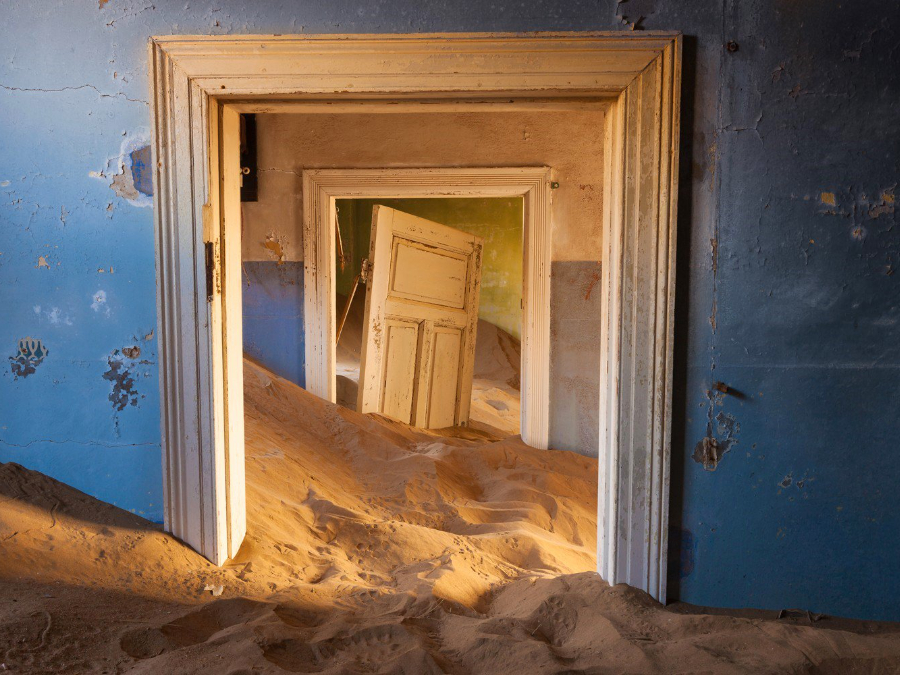
By the 1950s, it had emptied out, and today, walking through the completely abandoned buildings and streets reclaimed by the desert, it’s almost unbelievable that this was once home to the first X-ray machine in the Southern Hemisphere, and the first tramway on the African continent was also built here.
The Sons of the Sun
Namibia is more than just its natural treasures and wildlife. We are in close proximity to the cradle of civilization, and it’s worth exploring the culture, tribal customs, and art, as well as the unique African gastronomy.
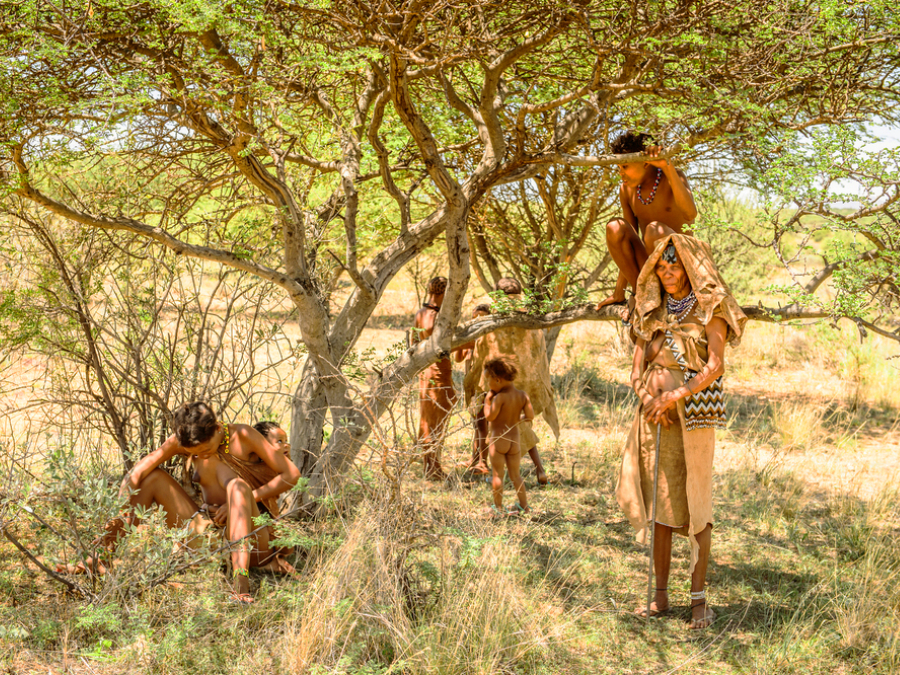
Several tribes once lived in this region, many of which migrated, and over the last few centuries, traces of tribal culture have significantly faded. This is not by chance, as the intense exploitation and genocide by German colonizers paid no regard to the interests of the indigenous people. The Himba tribe has uniquely preserved its independence; they remain self-sustaining and mostly live in isolation from the outside world in Namibia. They are easy to recognize, as they coat their skin and hair with a mixture of fat and plant-based substances, giving them a striking red appearance from head to toe. Their history is marked by a series of hardships: other tribes have attacked them, droughts have decimated them, and colonialists massacred their people. Today, their numbers are estimated between 20,000 and 50,000, and they mostly live in clan systems. While they are rarely seen by those traveling through Namibia, tourism has found them, and every year, more communities that rely on tourism emerge, having recognized the potential in the travelers who visit.
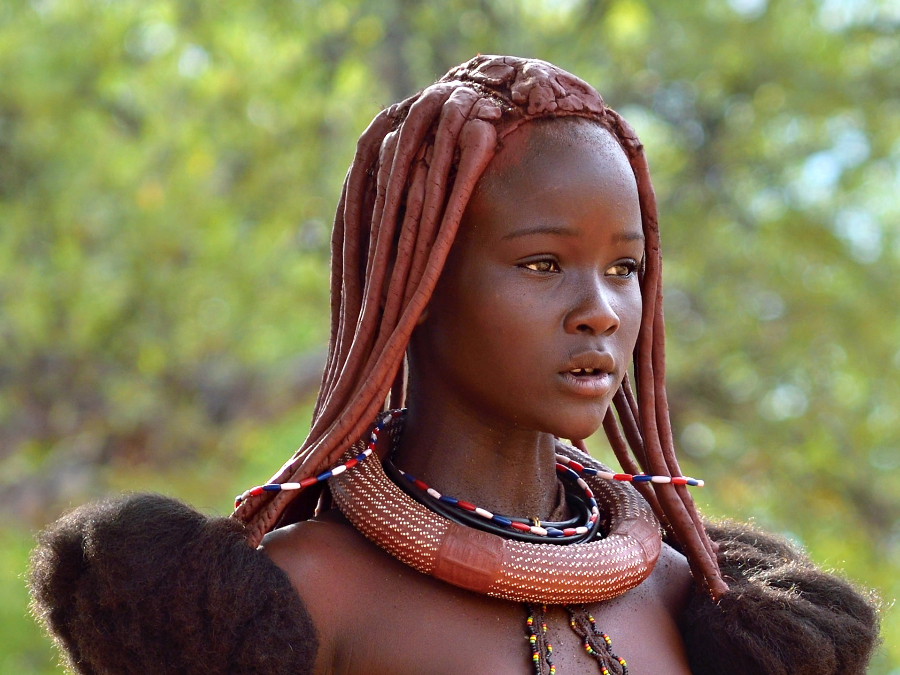
Red-painted residents can also be seen in larger towns. These are the "Herero," who migrated south and, to some extent, became urbanized versions of the Himba. Their ancestors served the colonial settlers, and when they rose up against the colonial oppression, the German retaliation nearly wiped out their entire population. The descendants of the Herero today are more peaceful but still stand out with their distinct appearance, even among city dwellers. The German colonizers haven't left without a trace, as about 30,000 Germans still live in the country today. It’s quite a surreal experience when, after driving through the African landscape, you suddenly enter Swakopmund, a town nestled between the ocean and sand dunes that feels like a mini Germany, with German colonial-style houses, German signs, beer gardens, and European hotels.
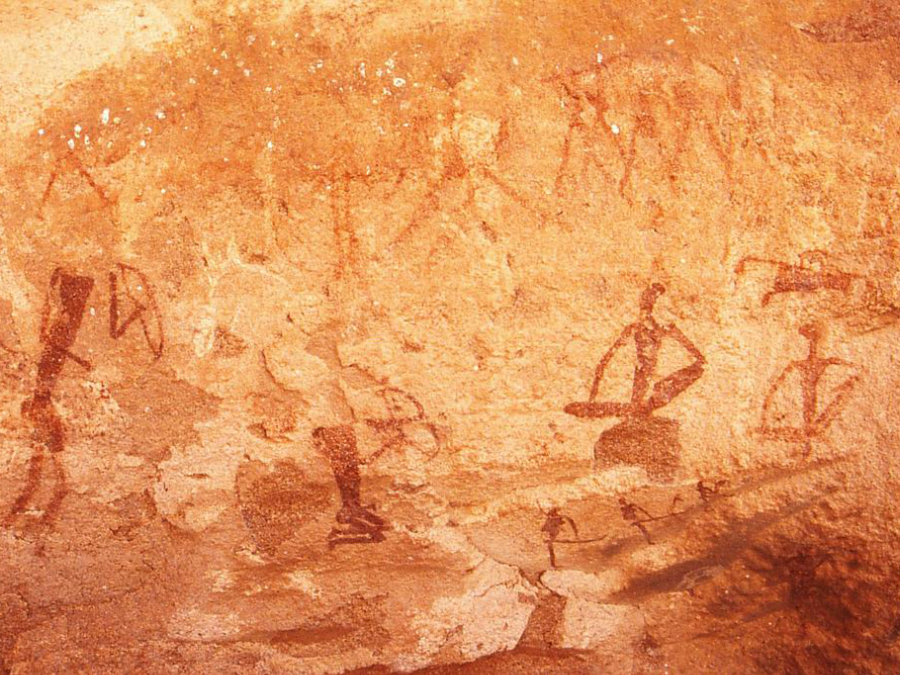
If you're more interested in Africa's distant past rather than recent history, make sure to visit the rock engravings at Twyfelfontein. Here, around 2,500 ancient petroglyphs from the late Stone Age can be seen. These red rocks, familiar from our history textbooks, bring the once fertile springs to life, offering a glimpse into the daily lives of the hunter-gatherers who lived in this area over a thousand years before Christ.
The flavors of Namibia
The country’s quality hotels and restaurants now have significant experience in catering to tourists. Accordingly, we have access to numerous international cuisines. If we take a closer look at the cuisine of Southwest Africa, we can observe that European tastes have significantly influenced the preparation of traditional dishes. Undoubtedly, the German influence is evident in the sausages made from African game meat, while the appearance of steak-like dishes on menus reflects Anglo-Saxon tastes. Namibian cuisine is especially unique for its game meats, with the local population naturally consuming antelope, buffalo, ostrich, and even zebra. In coastal regions, fish and other seafood are popular, and in terms of seafood, Namibia is the most significant exporter among the Southern African nations.
Of course, there are some exotic dishes worth trying. The term "potjie" means pot or cauldron. The Dutch settlers brought the cooking vessel, and the African continent provided the ingredients for this popular Namibian dish, which is a kind of meaty, vegetable, and saucy one-pot meal, typically made with pork, lamb, or any other meat. Potjie is a communal dish: everyone has their own special recipe, and it can be made in a thousand different variations.

Of course, roasted meats are also popular in the country. If it moves, it can be roasted; if it doesn’t, it can be used as seasoning. Crocodile, antelope, and even insects are served grilled, but the most popular roasted dish is kapana, a type of grilled beef. In Western civilization, we would call it street food, although it’s been prepared here since long before European culture even existed. The meat, grilled in the open air, is usually served with a tomato-chili-onion sauce.

While the dishes mentioned above are easily digestible for the European stomach, only the truly curious gourmets tend to try the crispy bites made from caterpillars. Mopane is a type of caterpillar (the larva of the emperor moth), which can be prepared in various ways—as a snack, in a salad, but most commonly fried until crispy. Due to its high protein content, the larva is a rich and high-quality source of nutrition, though it definitely lies far outside the bounds of typical European tastes.
When it comes to plant-based ingredients, the most popular and widespread are various maize and millet dishes. They are consumed on their own as porridge, but for visiting travelers, they usually appear as side dishes. No matter how open we are to foreign flavors, we should choose carefully where we eat. Local dishes are often sold at markets and along roads in smaller towns, but hygiene standards at these places are, to put it mildly, far below European expectations. In hotels and quality restaurants, however, you can find even the most unique delicacies, so it’s safer to rely on professional hospitality.
Important Things to Know Before Traveling to Namibia
Entry requirements: As British citizens, we can travel to Namibia with a visa, which can even be obtained upon arrival. If we want to arrange it in advance, we can obtain it at a Namibian embassy in London. Our passport must be valid for at least six more months from the date of entry.
Traveling with Children: Namibia offers countless exciting discoveries, making it an ideal destination for travelers with young children who are ready for a safari adventure. If only one parent is traveling with the minor child(ren), a consent letter from the other parent may be required upon entry into the country.
Language: The official language of Namibia is English. This is not just the official designation; in fact, many people speak it fluently – with the exception of perhaps the most remote villages.
Currency: Namibian dollars are not easy to obtain in the UK, nor is it necessary to do so. It’s a good idea to bring euros and US dollars with you, which can be exchanged for Namibian dollars upon arrival. A bank card is not sufficient, as most gas stations and smaller local shops only accept cash.
Transportation: Namibia follows left-hand traffic. To rent a car, you will need a valid driving license and a bank card. You can rent a car from various locations and choose from different services. For example, Namibia2Go takes care of everything from the moment you arrive at the airport.
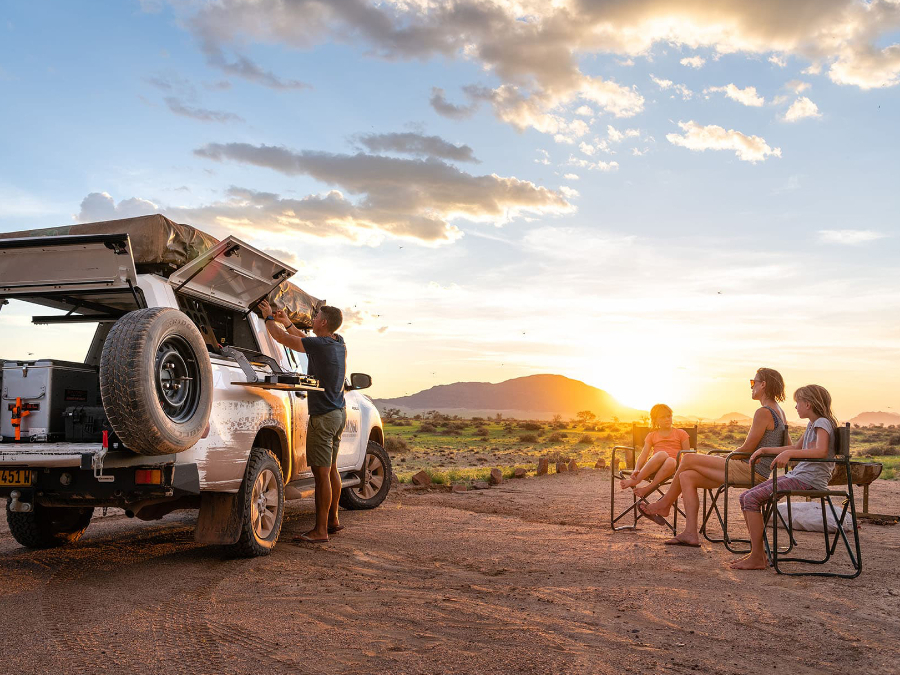
Vaccinations: The requirements may change from time to time, but currently, there are no mandatory vaccinations for travelers from the United Kingdom upon entry into Namibia. If you have previously visited a country where the yellow fever vaccination is required, you will be asked to present your vaccination certificate upon entry. For travelers to Africa, it is highly recommended to renew the childhood vaccinations for diphtheria and tetanus, as well as get vaccinated for hepatitis A and B. In tropical areas, especially along rivers during the rainy season, it's advisable to take precautions against malaria.